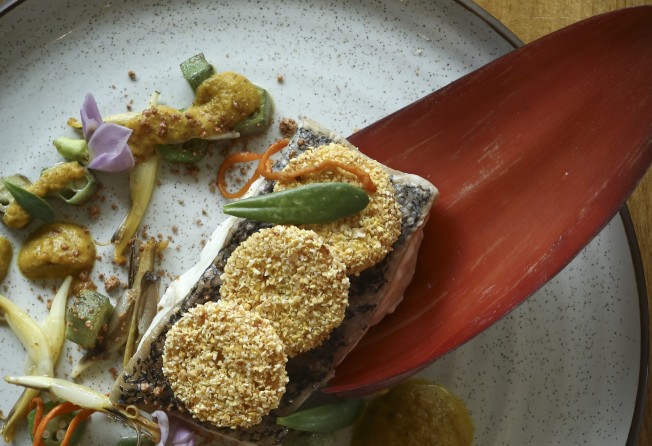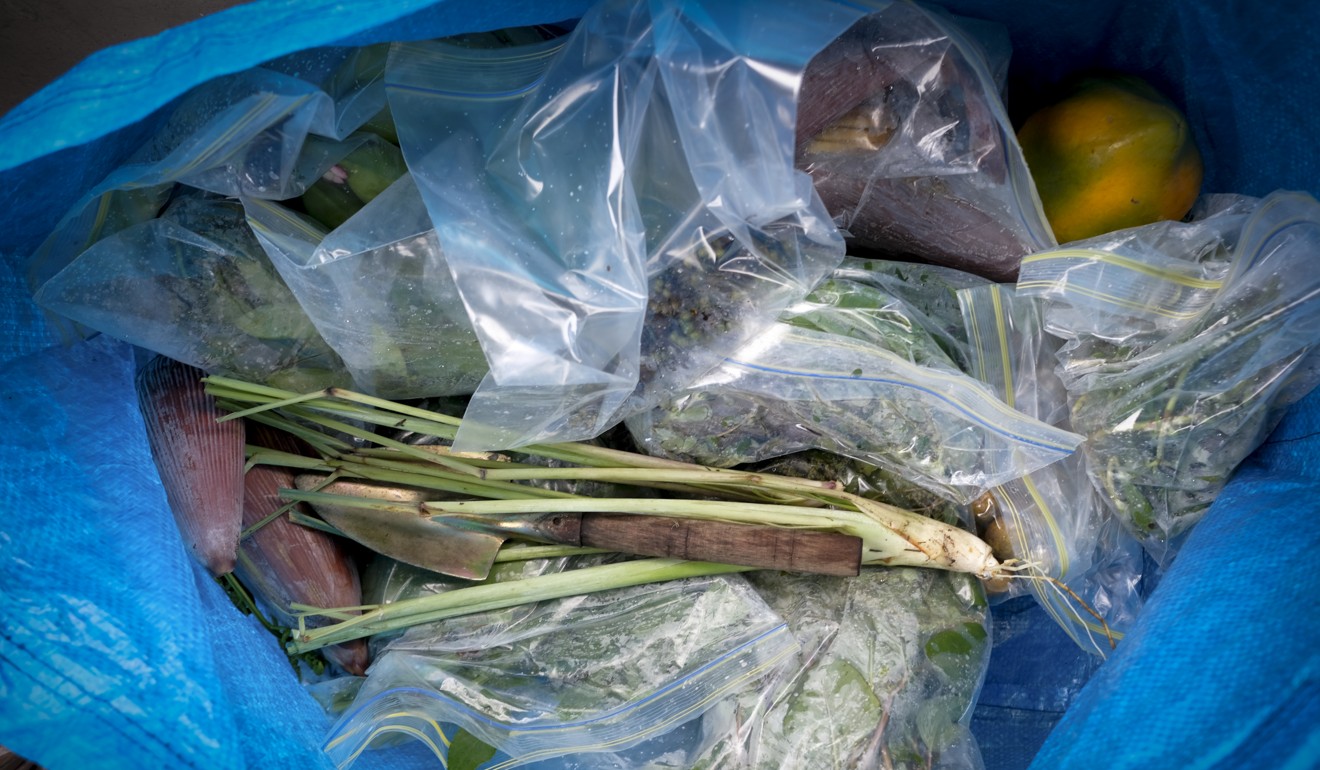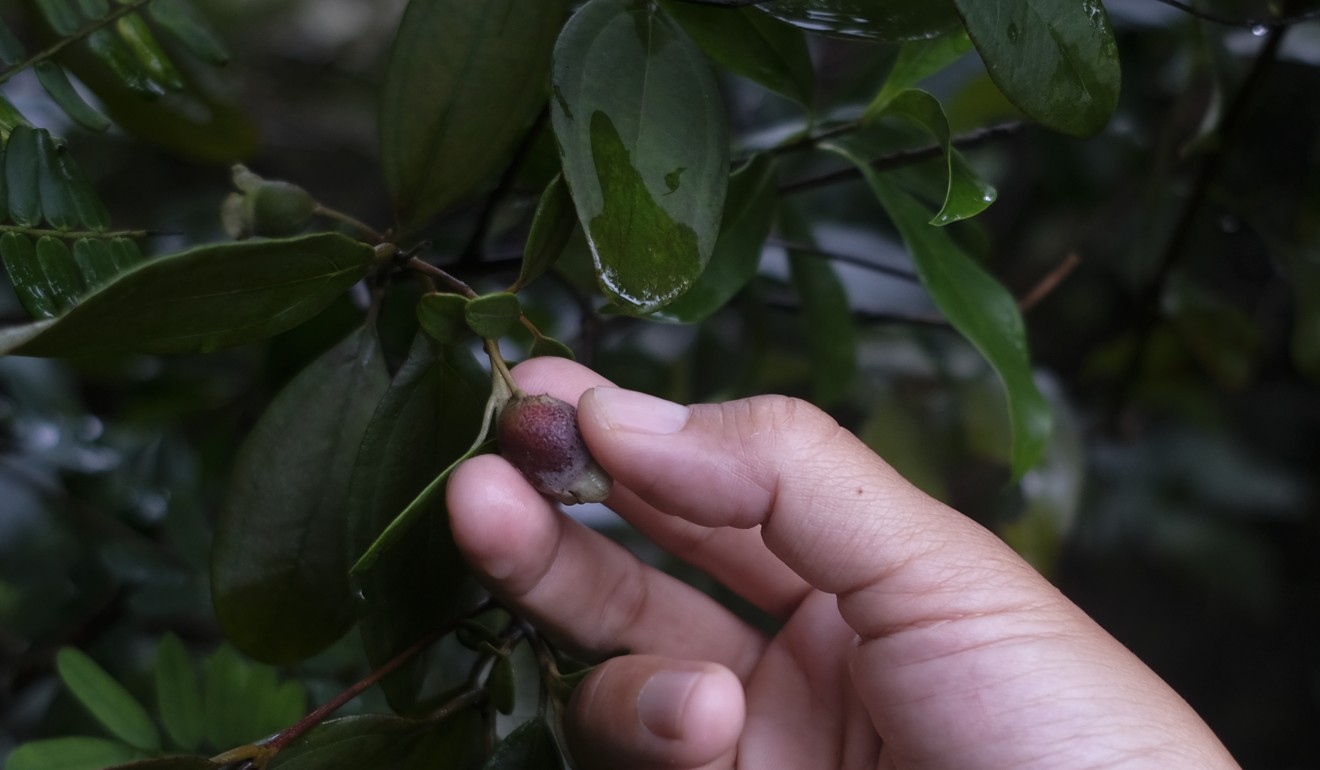A post shared by Good Catch (@goodcatchfoods) on Dec 9, 2018 at 11:27am PST
Six global food and wellness trends for 2019 – from marijuana edibles to fish-free tuna
- Forget kale, there is a new wave of superfoods and wellness trends headed your way in the new year
- We look at the predicted rise of brain foods, green coffee and more

As the year draws to a close, we gazed into the wellness crystal ball and found five global trends that will gain traction in 2019, having an impact on what we put on our plates, our mental health and our produce choices.
1. Fish-free fish
This year saw plenty of meat-free meats hit the market, including Impossible Foods, Beyond Meat and Omnipork. Naturally, the next big plant-based animal product has to be fish-free fish.
Sophie’s Kitchen in California, which makes “scallops” and “crab cakes” from pea and potato protein, says sales of its seafood-free eats has almost doubled in the last year. Similarly, US-based Good Catch are dishing up fish-free “tuna”.
Aureal Cordero, who represents Good Catch, says the company’s “pioneering plant-based chefs and trendsetters in the sustainable food movement, Chad and Derek Sarno” created the fish-free tuna that is plant based. It contains “14 grams of protein per serving made up of peas, chickpeas, lentils, soy, fava, and navy beans. It is rich in omega-3 from algae oil, and all ingredients are GMO-free and gluten-free”.
Good Catch’s values, says Cordero, “are anchored in being a solution to the complex, global issues of our oceans: 90 per cent of global fish stocks are overfished or fully fished. Global fisheries are expected to collapse by 2048 [unless something is done to change consumption levels]. Wild-caught fish have high levels of mercury and other contaminants that are a serious human health danger [if consumed in large quantities]”.
The Good Catch team says about “300 marine animal [species] are fished around the world for human consumption and only 30 land animal[species], so the opportunity to disrupt the marine category is 10 times bigger than chicken, beef, and pork.” Added to this is the upsurge in vegetarianism and veganism globally – Chinese government guidelines are encouraging the nation’s 1.38 billion people to reduce their meat consumption by 50 per cent by 2030.

2. Brain food
A cure for Alzheimer’s disease, a chronic neurodegenerative disease, seems elusive. Increasingly, doctors advise that we can help retain brain health and cognitive function by eating well. Dr Lisa Mosconi, director of the Women’s Brain Initiative and associate director of the Alzheimer’s Prevention Clinic in New York City, says “as a society, we need to learn to eat for our brains”.
“Our food choices influence our waistline and perhaps our choice of clothing – but we are less comfortable, or less aware, that we feed our brains, too,” says Mosconi, who is the author of Brain Food: The Surprising Science of Eating for Cognitive Power.
Diet, she says, “plays a clear role not only in the short-term, but also in our risk of developing Alzheimer’s disease; there is consensus among scientists that at least one-third of all Alzheimer’s cases could be prevented by improving our lifestyle, that includes cardiovascular fitness, keeping our brains stimulated, and of course, eating better”.
Foods that are particularly brain protective, says Mosconi, include all foods that are rich in antioxidants, which help keep memory sharp as we age, vitamins and minerals, as well as polyunsaturated fatty acids like omega-3 fatty acids. So, opt for cold water, fatty fish such as salmon, mackerel, blue fish, sardines, and anchovies (for the best natural source of omega-3’s), dark leafy greens (spinach, Swiss chard, dandelion greens and kale) and berries (especially blackberries, blueberries, strawberries, raspberries, but also dark cherries, goji berries, mulberries).
And what should we avoid in 2019? “Foods that are detrimental for health,” says Mosconi, “include processed foods, especially those that contain transfats.”
Mosconi says there’s a close association between consumption of trans-fats and increased risk of cognitive decline. Some research shows that it takes few trans-fats in the diet to develop cognitive impairment; people who consumed two grams a day of trans-fats had twice the risk of those who ate less than that, Mosconi notes. Typical processed foods that are high in trans-fats include baked goods such as doughnuts, cakes and frozen pizza, and many snack foods such as biscuits and crackers, as well as margarines, cheeses, and spreadable or “creamy” products such as coffee creamer.

3. Greener coffee and beverage packaging
In the UK, coffee chain Starbucks, this year, began charging 5 pence for a paper cup to promote re-usability. Its so-called “latte levy” is the latest in a bid to cut waste. Burger giant McDonald’s has replaced plastic straws in all its UK and Ireland outlets. What’s next?
Starbucks, which boasts 99 per cent ethically-sourced coffee, has committed US$10 million to develop a fully recyclable and compostable cup. It is working to “replace single-use straws by 2020 by replacing them with a new strawless lid and alternative-material straw options in more than 29,000 stores around the world”.
Starbucks in the United States has just launched a gift that keeps giving. Customers who purchase a Brewed Refill Tumbler will be granted one free coffee or tea every day for the entire month of January.
Not to be outdone, McDonald’s Hong Kong says it “offers dine-in McCafe customers ceramic cups, glasses, ceramic plates and stainless steel cutlery”, and invites customers to bring in their own cups. In 2019, it plans to launch McCafe travel mugs. It phased out all foam packaging in 2018, replacing it with paper, and is considering extending its “No Straw Monday” campaign.

4. Embracing imperfect produce
For many years, only perfectly straight beans, unblemished fruit, and uniformly sized peas were welcome in serving dishes. Now, though, the world has woken up to the fact that misshapen produce doesn’t taste any different to unblemished produce and should not be consigned to the trash pile. “As public consciousness about the environmental consequences of food waste grows, the grocery-buying public is starting to embrace ugly produce as an easy and meaningful way to waste less food,” says Emily Carter at US retailer Imperfect Produce.
Empowered shoppers are now asking hard and important questions about where their produce comes from and what produce is being excluded from the marketplace, Carter says.
“The average shopper today is far less likely to care about their carrots being straight and their oranges being free of blemishes as long as they taste great. This means that more folks are seeking out ugly produce than ever before and companies that make a point of sourcing this produce have more potential customers than ever before. Nevertheless, there are billions of pounds of waste happening throughout our food system every year, so there is a lot more to be done.”

5. Wild weeds
Benchmark Resorts and Hotels recently revealed its top 10 dining trends for the new year. Kale is out, they say; wild weeds – sorrel, dandelion greens, and amaranth – are in.
Some nutritionists suggest that when compared with shop-bought, commercially grown greens, edible weeds are higher in vitamins, minerals, phytonutrients and phytochemicals (such as beta-carotene) and have not been degraded by shipping, packing or refrigeration.
Foraging is getting fashionable. Wild weeds are on celebrity chefs’ menus; consider the popularity of Copenhagen’s Noma restaurant – rated top eatery in the world four times – and its forest found dishes.
Chomchomyomyom, a private kitchen in Hong Kong’s Sheung Wan district sources 80 per cent of its produce locally. Chef Don Trimble says, “we let Mother Nature write the menu for us. Instead of relying on what can be flown in, we listen to our local farmers and we take walks in the countryside, observing what will make it on the plate. Other than items being passionately grown for us by local farmers, we use many wild ingredients as well. It still excites me to know that I can take a walk less than 5km away from Central and collect enough wild ingredients to make a meal”.

Hong Kong has many wild ingredients to forage for, he says, including tropical fruits, vegetables, weeds and even delicacies from the sea.
Educate yourself before foraging, warns Hong Kong’s premier forager Wanda Huang. Some weeds will make you sick if you eat too much of them. Wood sorrel – for example – should not be eaten in large quantities because of its oxalic acid content, which can be poisonous in large amounts and has been linked to kidney stones. Some finds are downright dangerous as they are toxic to humans.

6. Marijuana edibles
It may take time for this trend to spread to Hong Kong, but there is a growing appetite for the marijuana plant extract cannabidiol, or CBD. This phytocannabinoid accounts for up to 40 per cent of the plant’s extract. It makes you mellow and is used to manage pain. Another cannabis extract, tetrahydrocannabinol, or THC, relieves pain, too, but comes with a high and is mostly illegal throughout the world.
CBD is the really big buzz word in the weed world. Some US bartenders have made CBD cocktails, while some chefs are creating CBD-tasting dinners. Spring, a restaurant in Los Angeles, California, has a lunch with three CBD sprinkled courses. In Oregon, vegan café Harlow supplements its smoothies with a smidge of CBD for a small added cost . You can buy CBD teas and CBD ice-cream. The Los Angeles airport, LAX, is now called an “airpot” as passengers can tote their weed through without restriction, with the recreational use of marijuana being legalised in California earlier this year.
In some parts of the world, CBD is infused in beers and soft drinks. According to US analysts Baum and Whiteman, Constellation Brands, owner of Mexican beer brands Modelo and Corona, plans to invest a further US$4 billion in Canadian cannabis company Canopy Growth. This follows its first investment in the company, last year, of US$179 million. Rumour has it, even Coca-Cola – whose very name originally referenced cocaine as an ingredient – is toying with CBD-infused Coke.